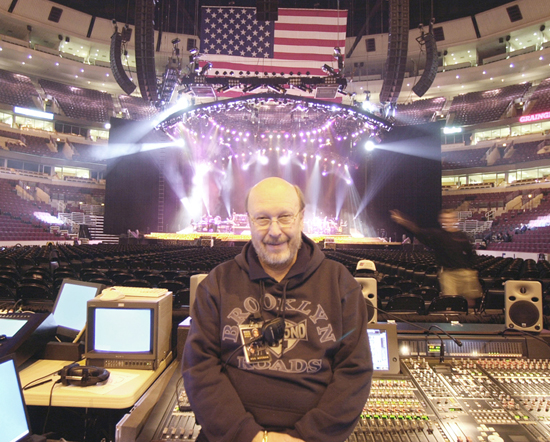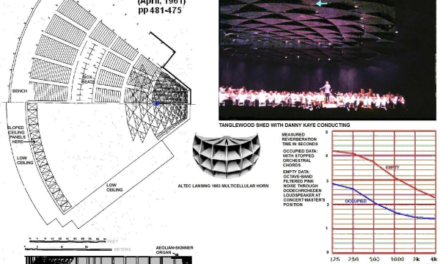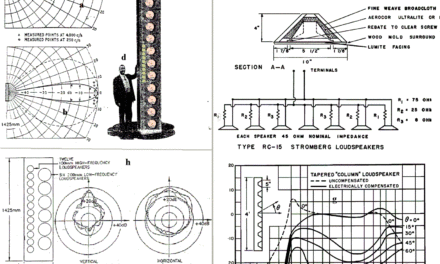R. David Read and his wife, Sharon – Photo Courtesy Sound & Communications Magazine
R. David Read passed on a few days after Easter of 2015, at the age of 79. Born in his Canada, his first job was as a Western Union messenger boy where he learned Morse code. After high-school and his family move to the USA, he applied for a position with the Southern Pacific Railroad, hoping to combine his learned knowledge of Morse Code and his love of railroads. But first, the railroad assigned him as a machinist helper in their main steam locomotive repair and rebuilding “roundhouse” in Sacramento, CA. Finally, he was able to land a position as telegrapher and tower operator. He advanced to telegrapher/wire-chief for Southern Pacific and moved over to the Santa Fe Railway when SP wished to assign him to a location unfavorable to his family plans. With advancement in technology, he entered the fields of microwave and automation, and was active in the first application of background music and on-board announcements on the Santa Fe’s streamliners, including the Super Chief. He then worked for Rauland-Borg, Dukane Corp. and the pre-Telex Altec Lansing, as well as helping NSCA organize its educational programs. He never left his love for railroads, and his last public-address installation was for the Cumbres and Toltec narrow gauge steam tourist railroad in Colorado and New Mexico.
Recent feature magazine articles were a pair on the new multilevel architecturally distinguished Berlin Central Station: one on sound, video, and communications for Sound and Communications, and one on the physical railroad plant and its role in European transportation for Trains Magazine. Classic Trains has just published his “When Trains ran late and telegraphers earned their pay” in their Summer 2015 issue, along with an obituary. David was a Sound & Communications Contributing Editor, wrote many features covering industry events and installations, and analyzed industry trends. He also initiated S&C’s “Audio Pioneers” series, covering Lord Rayleigh in S&C‘s February 2000 issue; that series ultimately became “Industry Pioneers,” including this Beranek biography, and concluding with Dr. Eugene T. Patronis, Jr. He was a member in both the AES and ASA, was`an associate of USITT, and participated in BICSI proceedings, Having kept up his interest in telegraphy, he was a participating member of the Morse Club of America. He was continually concerned about safety and on occasion lectured on safety at railroad crossings to school children. His published the following editorial in the Lafayette, Louisiana, Advertiser:
Opinion: Trains Don’t Jump Tracks to Chase Motorists
LAFAYETTE, La. — Back in my younger days, I worked for the railroads and can attest to having witnessed some incredulous acts of stupidity when the public comes in contact with railroad operations.
In about 1955, the SP Railway sent me to work at an interlocking tower in the Fruitvale district of Oakland, Calif. Fruitvale was a tough neighborhood; residents were not exactly paragons of virtue. Fruitvale Avenue crossed, at grade, some 12 railroad tracks, including a double-tracked mainline that carried extensive freight and passenger traffic.
The street was protected by crossing gates, flashing lights and bells; but owing to the frequency of rail traffic, it was all too common for motorists to jog around the gates in a misguided gamble to forfeit their lives in order to avoid having their travel delayed.
One of my duties was to drop the crossing gates as a train approached. Having witnessed all too many near misses, I had taken to throwing the gate activation lever, avert my eyes from the scene and disregard whatever consequences might ensue.
One evening, the sequence of events played out this way: As the gates transversed their arc, a heavy metal rod affixed to the arm was used to stop the downward travel. Hearing the sound of metal grinding on metal, I turned to my vantage point from a second-story window to see what might have transpired. In his haste to beat the gates, a man had driven under the swiftly descending arm and the steel rod had impaled his car, penetrated through the hood, through the air-filter and into the carburetor.
His car had been harpooned!
Leaping from his car, he surveyed his dilemma and commenced shaking his fist in my direction. My actions had probably saved his life, but I wasn’t about to risk a confrontation with an irate motorist; I called the Railway police.
The officer instructed me to raise the gates. When I proceeded to do as I was told, the gate went up accompanied by the car’s hood, air-filter and various carburetor parts. In this case, what could have been a potential tragedy had fortunately evolved into (the auto owner’s opinions to the contrary) a merely humorous incident.
In 2005, Louisiana had 131 railroad crossing accidents. The state ranks sixth nationwide statistically for such accidents. Remember, trains don’t get off the tracks and chase you.
The adage is still – as always: Stop, Look & Listen.
Wednesday, September 27, 2006, Lafayette, Louisiana, Advertiser
About the Author
David Lloyd Klepper is currently a student of Rabbinics at Yeshivat Beit Orot, Jerusalem, Israel, having moved to Israel in 1996 from his position as President of Klepper Marshall King, White Plains, NY, Acoustical Consultants, and as Adjunct Professor of Architectural Acoustics at City University, New York City. Before 1971 he was a senior consultant at Bolt Beranek and Newman, starting his consulting career there in May 1957. He received his SM and SB degrees in Electrical Engineering from MIT, and between times served as Assistant Audio-Radio Member of the PsyWar Board at Fort Bragg, NC, during the Korean conflict, leaving active duty as a 1st Lt. He provided acoustical advice for over 200 worship space buildings, including the National Presbyterian Church, Washington, DC, St. Thomas Church Fifth Avenue, New York City, the Capetown, South Africa, Anglican Cathedral, River Road Baptist Church, Richmond, Virginia, Young Israel of Southfield, Michigan, and Boston’s Holy Cross Cathedral. In this capacity, he was a pioneer in application of digital delay and electronic simulation of reverberation in worship spaces, and pew-back speech reinforcement. Publications include 40 papers in professional journals, a coauthor with Professor Kleiner and Father Rendell Torris of the book Worship Space Acoustics, JRosspub.com., and Editor of the two Sound Reinforcement Anthologies of the Audio Engineering Society. He is a fellow of both the Acoustical Society of America and the Audio Engineering Society, past Emeritus Board Certified member of the Institute of Noise Control Engineering, and a member of both the American Guild of Organists and the Organ Historical Society. He also belongs to a number of railroad and public transit interest organizations. You may contact Klepper at ddaveklepper1@gmail.com.





